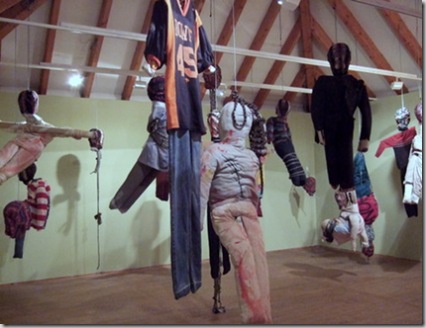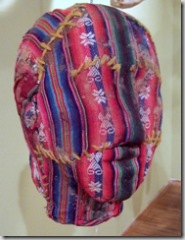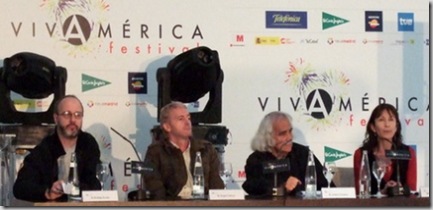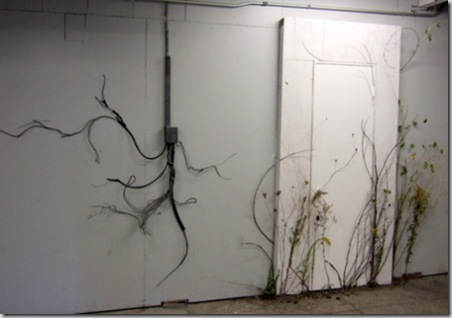Thursday was a more collective experience of Johannesburg. I set off on a bus with the other visitors associated with the South Project gathering. We were mostly Australians, with a few locals thrown into the mix. The director of the African Cultural Centre, Benji Francis, was our guide through Soweto. He explained to the bus the intricacies of obtaining rooms as a coloured person during the Apartheid government. We saw a full range of housing, from the brick houses in Orlando to the corrugated iron shacks in Freedom Park.
We drove into central Joburg and visited a traditional African market, which was a real feast particularly for the fibre artists. An amazing variety of herbs and plants were on display. But arriving as a group was more awkward than appearing as an individual. We descended on them with wide-eyes, gasps and plenty of cameras. All of a sudden they were a spectacle, and it was very clear they didn’t appreciate it. Our Zulu speakers conveyed the complaint that we were taking all these photographs without buying anything.
There was no spectacle available in the next part of the journey, to the white gated suburbs of Sandton. Strange even in this area we did not see one white person on the street.
After an apocalyptic thunderstorm, we went to the Origins Museum at Wits University. This was a slick informative telling of the beginnings of humanity in South Africa and particulary the story of the San people, who are the indigenous of the country. It wasn’t so much the museum that was interesting as seeing the experience of this through the eyes of the women from western desert, Ina Scales and Ivy Hopkins. There were obvious commonalities between the Aborignal and San peoples, but I think they were a little shocked at the way their secret myths and objects were on display. There was much made of the magic associated with rain-making and how this was eventually incorporated into Zulu and Xhosa cultures as the San assimilated into local African communities. Given the amount of rain in Joburg, it seems certainly a successful integration. Perhaps Australia can put San on the immigration priority list.
The last stop was the Credo Mutwa place of stories. We would probably call this a ‘community museum’, though it was more the museum of one man’s imagination, the Zulu prophet and leader Credo Mutwa. The manager of the park Mighta Mutukhle shows us around the surreal and massive concrete statues depicting mythical Zulu creatures, including the aliens who abducted Credo in Zimbabwe and fortold the coming of the AIDS pandemic. The potter Philip took us into his cave and showed us his figures, but we were most curious about the painting by Credo Mutwa that seemed to depict an alien coming to South Africa. Philip told us that this was about his prophecy that there would be five female Presidents leading African countries by 2015. Part of the canvas included a dragon trying to eat the sun. For Philip, this was a case of ‘Ole Bande Lenga Shone’, or ‘do not allow the sun to move’. When I inquired later with some Zulu speakers about this phrase, it seemed to be a call to action. For instance, if a buyer wanted to defer making a purchase, the seller could utter this phrase to encourage a decision.
We had to rush back to Orlando West and quickly change for the opening of the imbizo. It was a relaxed event with drinks outside the Hector Petersen Museum (juices in a glass, and sherry in an enamel mug). We then went inside for some dancers and speeches. William Kentridge has some interesting things to say. He reflected on the experience of visiting the Art Gallery of New South Wales and finding the Aboriginal art kept in a totally separate floor from the other Australian art. He noted that this kind of division was exactly what they were trying to avoid given the legacy of Apartheid. He also reflected on the experience of the cultural boycott that affected South African in the 1980s. He said that this had the effect of strengthening the voice of local artists. They weren’t distracted by the lure of metropolitan centres, but had to focus their energies on local audiences. He associated this challenge of provincialism with the aims of the gathering.
Then Ma Kushu spoke, who runs a craft centre in Zululand. Her speech was quite rambling and tested the patience of the audience, but she did provide an important voice of rural women. I’d been speaking with her earlier when she explained to me some of the basics of craft education in her region, where the very basics of measurement have to be explained so that they know how to fulfil orders. She said that few of them had had an education and some had never even held a pen before. But she concluded her speech by giving our her email address and inviting anyone in the audience to contact her.
Then the Australian and New Zealand High Commissioners spoke. The Australian, Philip Green, really seemed to get the idea of the project and spoke very powerfully on its behalf. Afterwards, in the reception, I saw how he was speaking to some Sowetans who would not normally get through the gatekeepers in diplomatic functions. I was impressed at how this didn’t phase him and he was able to provide them with some practical advice and assistance.
Things carried on to the local shabeen where we were joined by a most remarkable man called Christof. He appeared like a Mr Kurtz on the scene — a Belgium dance director who moved to South Africa eight years ago to live in a township in Cape Town and has lived up the road in Soweto for the last year. Christof spoke with a thick ‘coloured’ accent, which has a strong Cockney character. We heard some of the less palatable aspects of life in Soweto, which made me wonder if we really wanted to go there, no matter how true they were.
Being in Soweto does put you in this moral dilemma. We are experiencing a charmed life here, amazing friendliness in the street, stories of great courage and optimism, and touching acts of ubuntu. But we know there is another reality out there — of absconding fathers, guns, AIDS and general hardship. Maybe it is better to only see the positive aspects of Soweto, and avoid the usual victim game which puts a convenient distance between us and them. We’ll see how well this strategy plays out of the next few days.
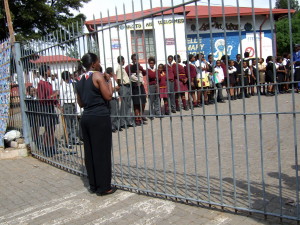
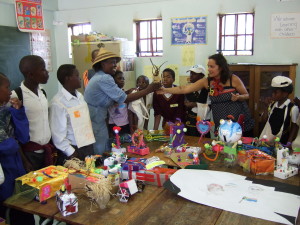
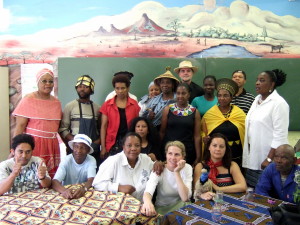
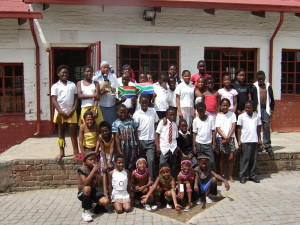
 I caught a taxi from Bree Street taxi centre in downtown Joburg. It was like a massive car park filled with taxis weaving in between queues of commuters.
I caught a taxi from Bree Street taxi centre in downtown Joburg. It was like a massive car park filled with taxis weaving in between queues of commuters. 